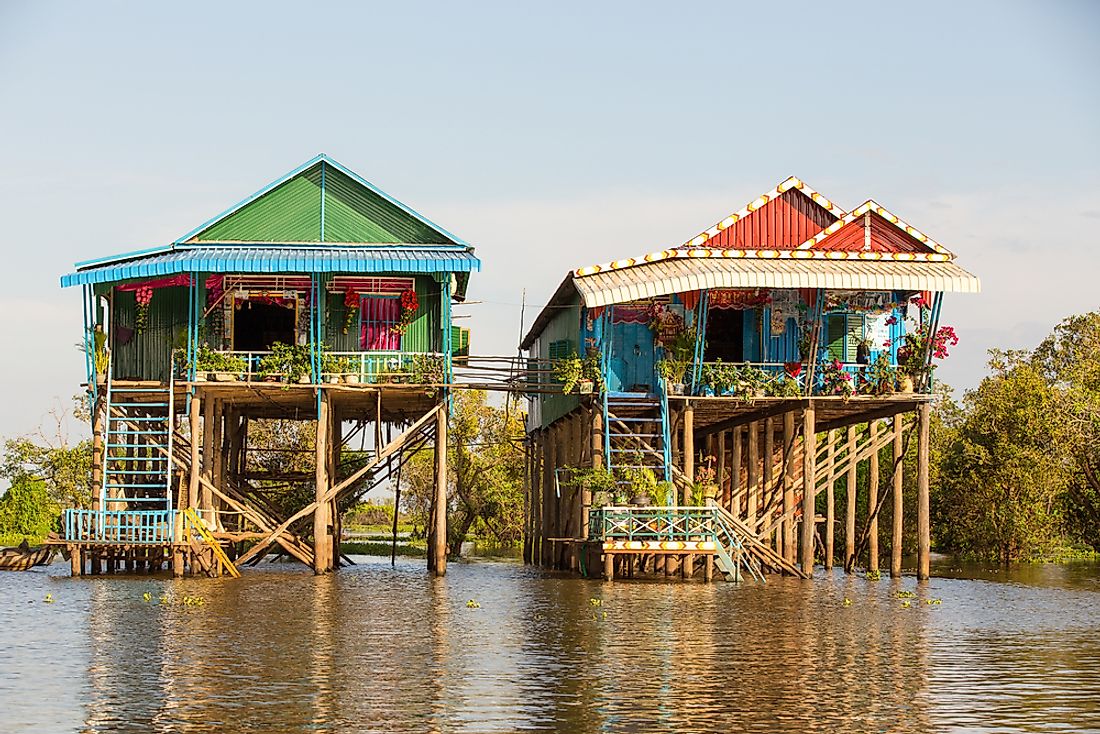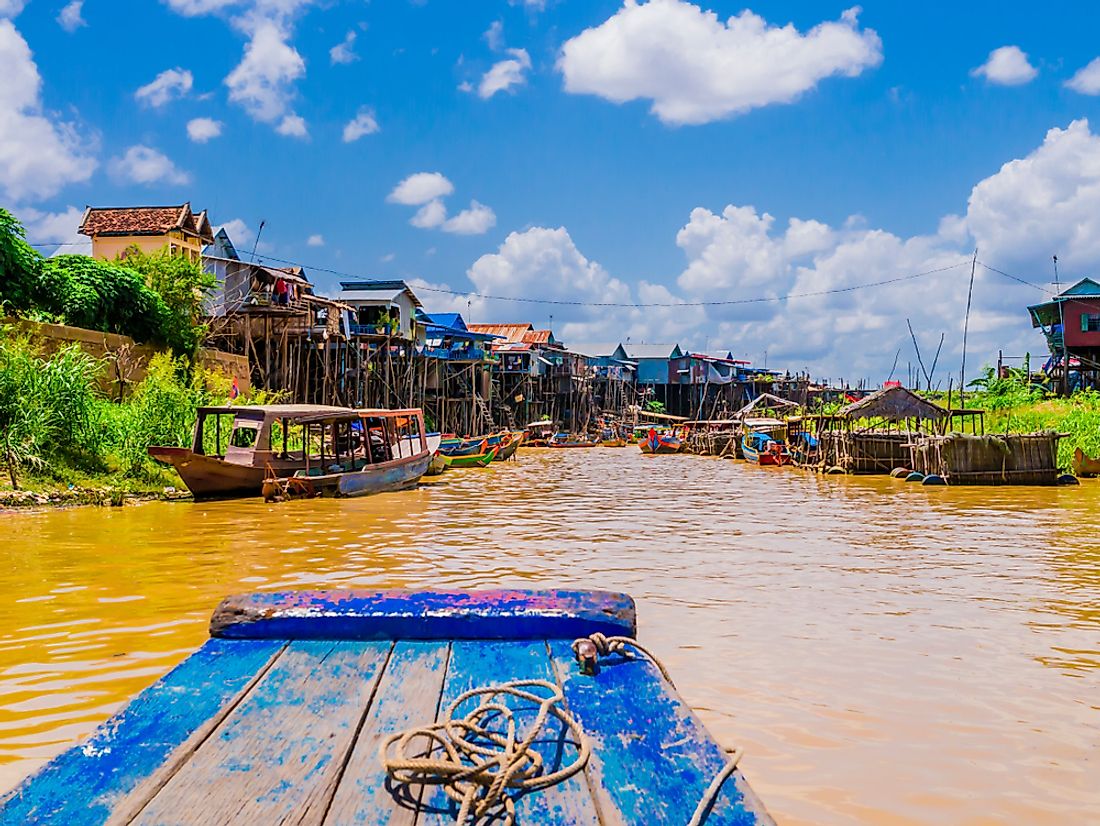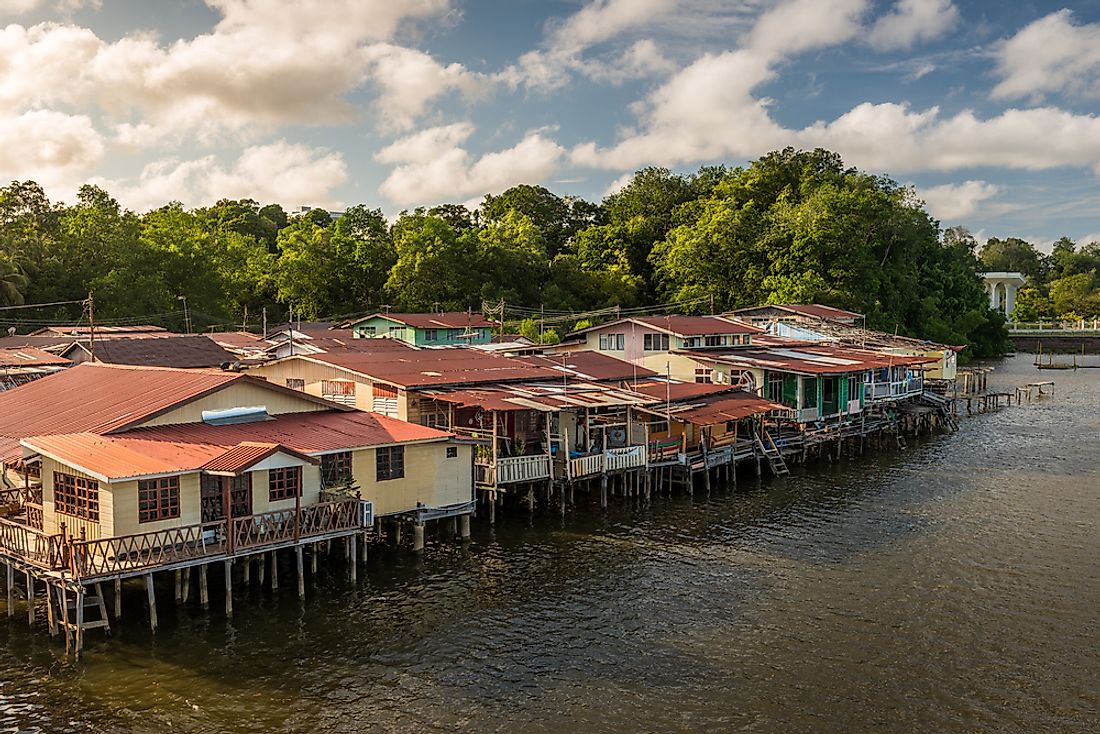What Is A Kampong?

The term kampongs, or kampungs, is used to describe a type of settlement in southeast Asian countries such as Malaysia, Indonesia, and Singapore. These habitations are generally quite basic and may lack electricity, water, and gas. Kampongs may also refer to city slums that are inhabited by rural peoples who have migrated into the city in search of better employment. The word "kampung" is a Malay word that means settlement or village. It is also possible that the word Kampong later evolved into the English word compound, as in an area composed of many houses in an enclosed area.
4. Where are Kampongs Found?
Most kampongs, modern and traditional, are found in Singapore, Malaysia, Indonesia, Cambodia, and Brunei. Singapore used to have many kampong villages, but urban development has reduced their numbers. One of the earliest kampong settlements in Singapore was a fishing village on the Rochor River. Other kampong villages were literally built on stilts in the coastal waters of northern Singapore. Cambodia, on the other hand, has kampong provinces that are tourist destinations for their natural and historical attractions. Brunei has one of the oldest kampong water villages, Kampong Ayer. It was settled earlier than 1521.
3. Who Lives in Kampongs?

Traditionally, kampongs were inhabited by Asian indigenous tribes. Indonesia is one example, with its many traditional villages called kampongs. Malaysia also has traditional kampong villages that contain at most 10,000 people. These villages have traditional leaders called penghulu, or village chiefs. The Kampong Ayer in Brunei is around 1,300 years old, and today has around 39,000 people living in its houses on stilts in Brunei Bay. It is a collection of small kampongs that are interconnected by 22.36 miles of boardwalks and served by water taxis. Singapore still has traditional kampongs in its northern areas, but today they are largely limited to the small surrounding islands of the country.
2. Architecture and Infrastructure

The infrastructure of kampongs varies from earlier times to today, and by specific country as well. Brunei has one of the most interesting, with Kampong Ayer. It has 4,200 structures on stilts linked together by walkways. There are shops, restaurants, schools, homes, a hospital, and a mosque. Recently, additional innovations planned included those for concrete buildings to house anyone wanting to live in them, provided freely by the king. In Singapore, one of the oldest kampongs is Nee Soon Village, dating back to 1850. As the village was settled, it acquired a laundry shop, a market, a cinema, clinics, and mechanic shops. It was demolished in the early 1980s as new developments arrived in the area.
1. Kampongs' Use To Describe Urban Slums
Singapore kampongs started as a British attempt at housing the population by ethnicity. The downtown area in the Singapore River was chosen to be the site for the Indian Kampong, Chinese Kampong, Malay Kampong, and the European Town. Later, some of these kampongs moved to the rural areas surrounding the river banks. Early kampongs were haunts for picnics, nature explorations, and adventure hikes. They were not crowded, and had better accommodations, but these later turned into city slums as more people settled in search of better jobs. As these settlements deteriorated, city authorities have actively demolished them to make way for new urban developments.







